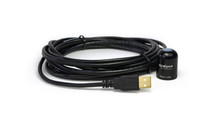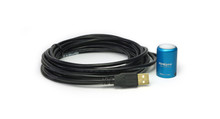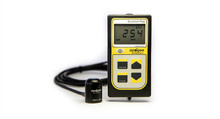pulpoinspace
Well-Known Member
ive decided the next toy i wanna get to continue tuning/building grow lights is an apogee quantum meter/sensor and have begun shopping. I have a few questions i need answered. i tried searching but couldnt find the info i needed.
first of all, ive been looking at these

 www.apogeeinstruments.com
www.apogeeinstruments.com

 www.apogeeinstruments.com
www.apogeeinstruments.com

 www.apogeeinstruments.com
www.apogeeinstruments.com
so, first question, do i need the handheld meter or should i save money and just use it plugged into my computer? thats how it works right, im not missing anything? ive got a windows 10 laptop should be no problem
if so, comparing the sq420 and the sq520, i got confused about these charts


So it seems like the 500 sensor is obviously way better hence the price. and if you use the 420 sensor with warm white flourescent LED (is that what im using? Qb96s) your results will be 10.9% low? am i reading that correctly?
So when you guys use your quantum meters are you adjusting for this?
Thanks in advance for any info!
@Barristan Whitebeard @Rocket Soul hope you dont mind i tagged u guys i know u know ur shit. but idk whose got experience with this. anyone else please chime in too!
first of all, ive been looking at these

SQ-420 Smart Original Quantum Sensor | USB Output
The SQ-420 smart quantum sensor can be connected directly to a computer to take spot measurements or graph and log real-time PPFD using the included software.

SQ-520: Full-Spectrum Smart Quantum Sensor (USB)
The SQ-520 smart full-spectrum quantum sensor can be connected directly to a computer to take spot measurements or graph and log real-time PPFD using the included software.

MQ-200 Original Quantum Separate Sensor with Handheld Meter
Apogee Instruments manufactures instrumentation to measure radiation and temperature for plant growth and more.
so, first question, do i need the handheld meter or should i save money and just use it plugged into my computer? thats how it works right, im not missing anything? ive got a windows 10 laptop should be no problem
if so, comparing the sq420 and the sq520, i got confused about these charts


So it seems like the 500 sensor is obviously way better hence the price. and if you use the 420 sensor with warm white flourescent LED (is that what im using? Qb96s) your results will be 10.9% low? am i reading that correctly?
So when you guys use your quantum meters are you adjusting for this?
Thanks in advance for any info!
@Barristan Whitebeard @Rocket Soul hope you dont mind i tagged u guys i know u know ur shit. but idk whose got experience with this. anyone else please chime in too!
Last edited:



